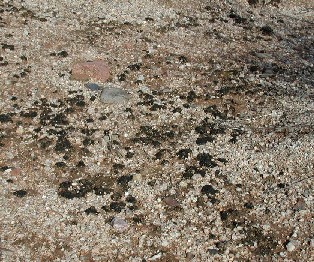SOIL CRUST

Photograph taken at McDowell Mts., 2002
SOIL CRUST |
||
|
|
||
|
Bluegreen algae (more properly, cyanobacteria), mosses, and lichens appear as darker patches on the soil surface. The importance of soil crust organisms to desert ecology cannot be over emphasized. They add stability to the soil as well as natural organic fertilizer in the form nitrogen fixed by the cyanobacteria. This patch is growing in a fire-scorched portion of the Sonoran Desert in the McDowell Mts., where soil erosion by wind and water could be much more severe without the crust. With a healthy crust, the desert vegetation will become re-established much quicker. Under brutal July heat and sunshine the soil surface can reach close to 100 degrees celsius while drought conditions may persist for years. Despite this, even a light rain shower brings the crust organisms out of dormancy within hours. Extreme biology! But these tough survirors are vulnerable to environmental assaults inflicted by people. Most disturbing to soil crust biology is the impact of tires and feet. Where hikers and foot traffic are concentrated the crust brakes apart or gets buried beneath material eroded out of nearby breaks. The hooves of over-stocked cattle and goats relentlessly pulverize the crust. Wind and brief, but torrential, downpours carry the thin soil layers away leaving rocky and infertile surfaces. Recolonization by new crust organisms and germination of plant seeds becomes becomes and an extended dificult process. Desertification intensifies.
Learn more about vital Soil Crusts in the desert Southwest
|
Sonoran Desert Naturalist Home Page
Copyright
Michael J. Plagens, 1999-03